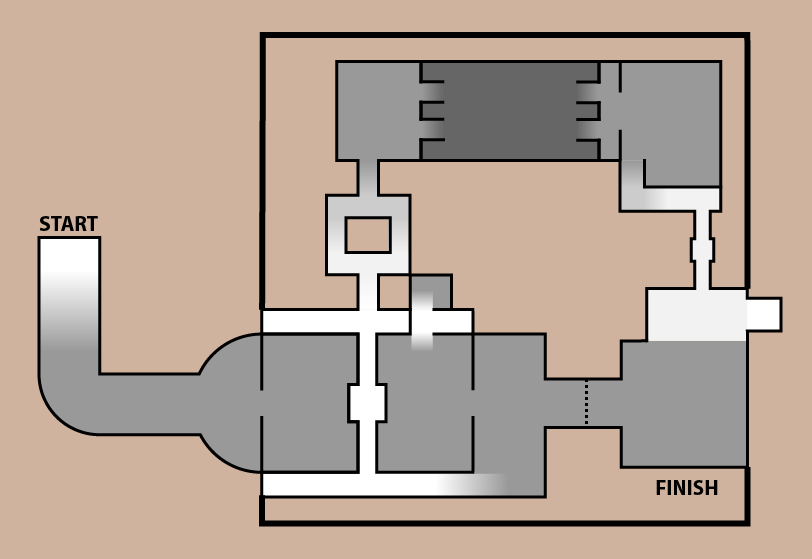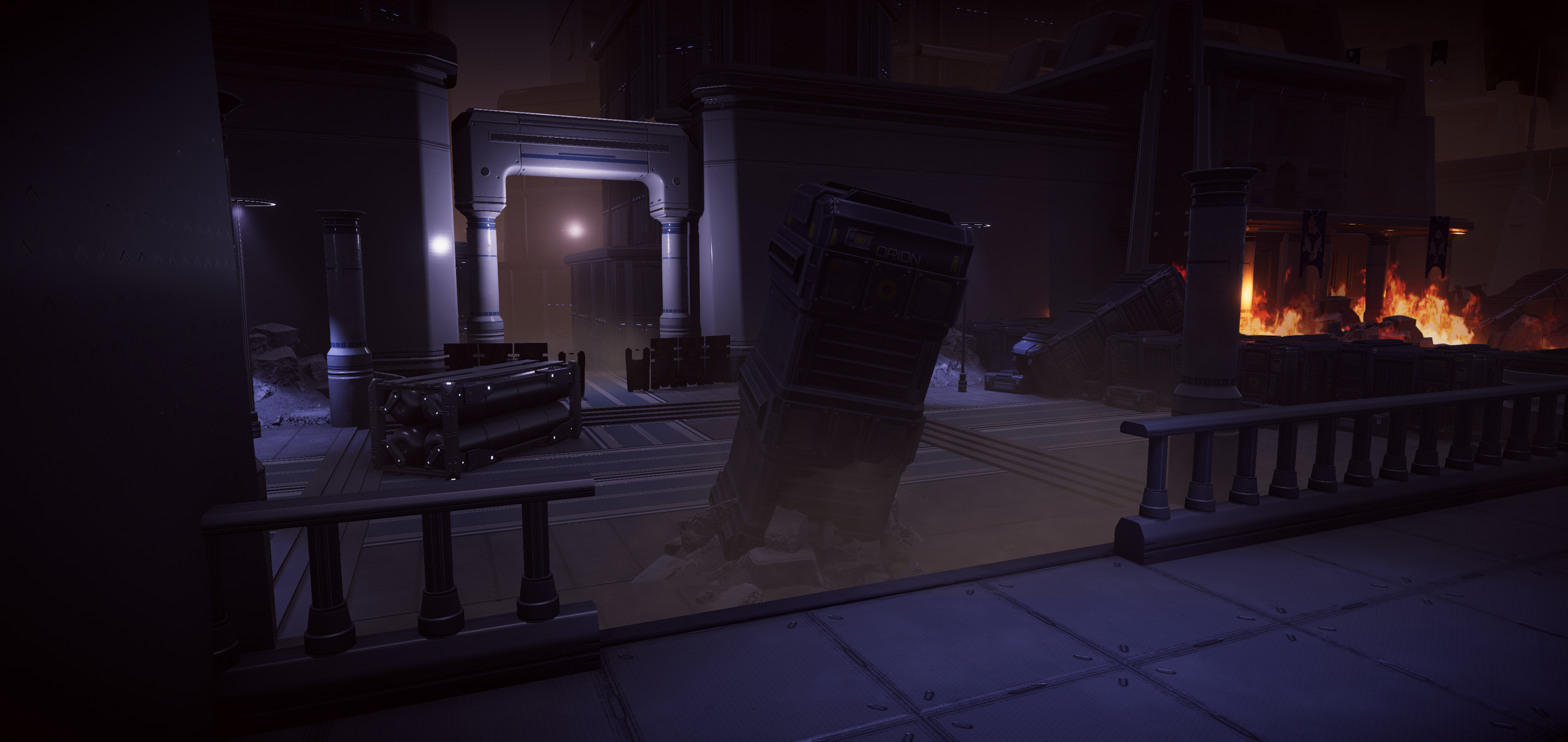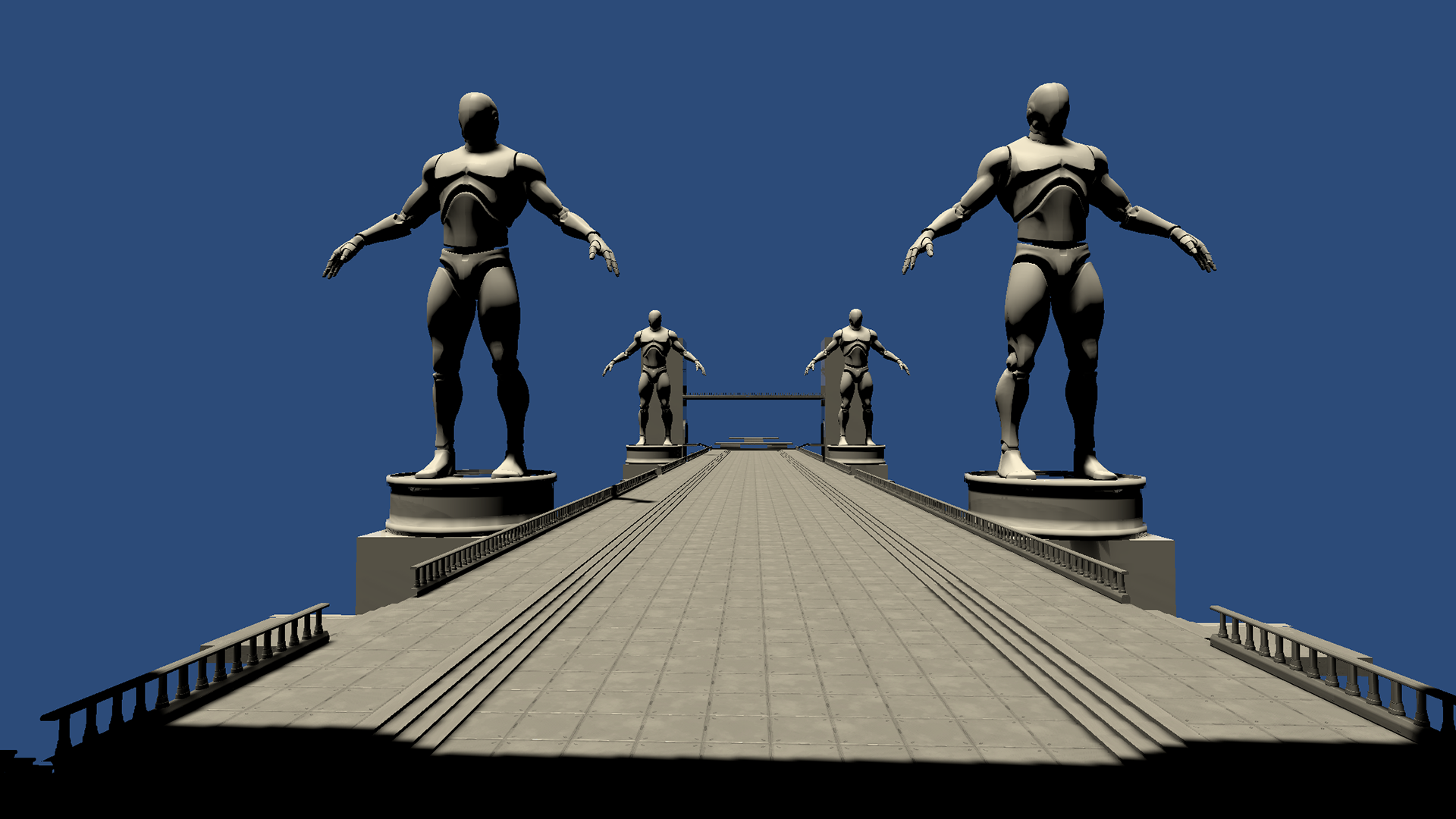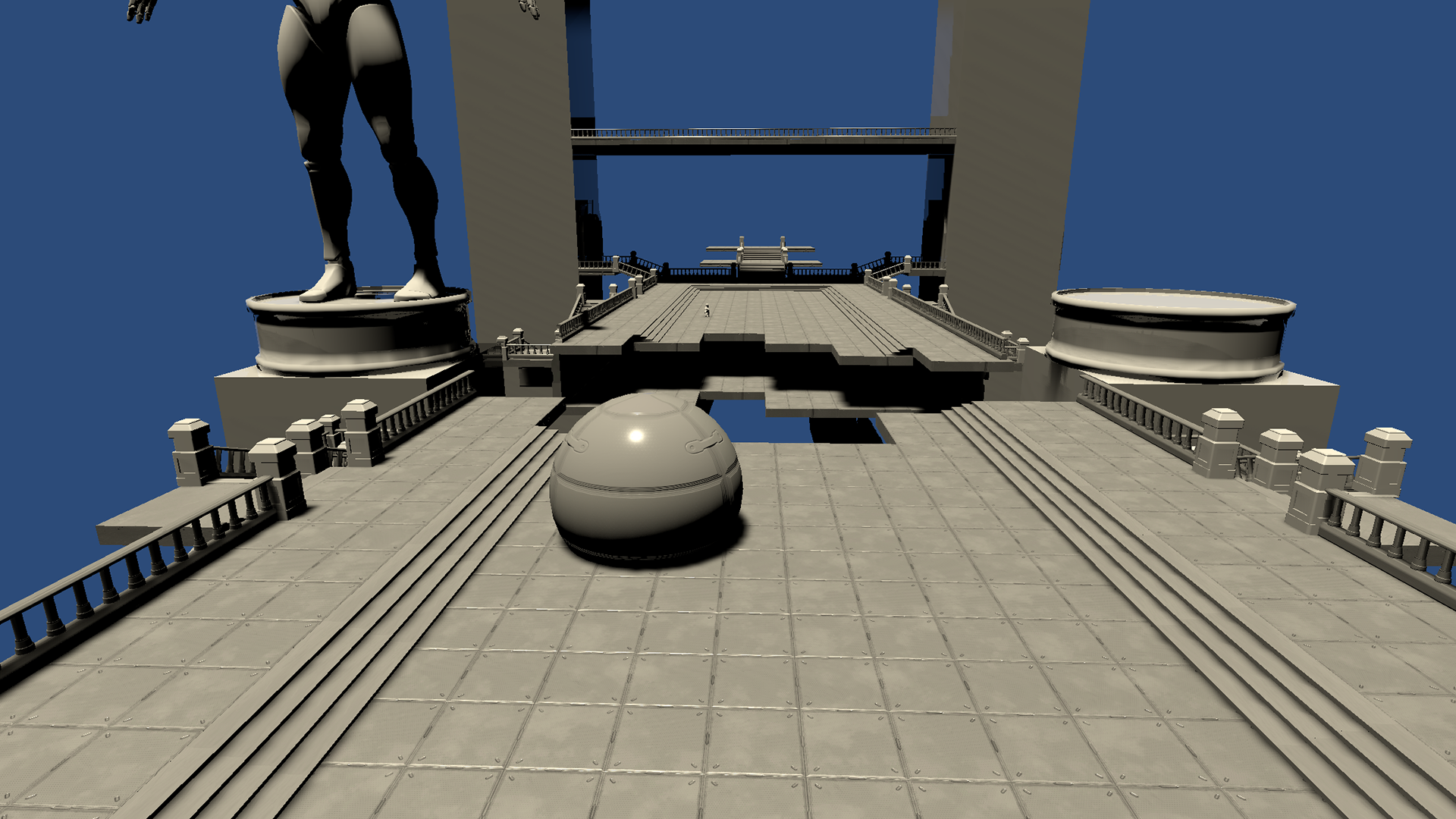Overview
Ryoko is a Sci-fi third-person shooter currently being developed by Airlock Studios. Production for Ryoko will be finished May 2019.
My Main Responsibilities for Ryoko:
Level Design: Planning, whiteboxing, and playtesting of three game environments, including a boss arena.
Gameplay Design: Iterated upon the design and adjusted the values of player and enemy combat systems.
Documentation Management: Constructed and maintained a 'design index', made with the intention of being easy to read and edit.
Implementation of collision data, AI, and level logic.
Team Composition:
Design: Charlie Tancock, Jonas Nilsen
Programming: Archie Andrews, Kyle Shepherd
Audio: Ethan Bradley, Chris Delaney
Character Art: Dom Marriott
Environment Art: Jonathan Hemmens
Prop Art: Viktoria 'Nethi' Nestorova
Animation: Sophie Shepherd
VFX and Cinematics: Charles Martin
Level Design Process
Ryoko's level design involved extensive collaboration with the team's environment artist. We had established game scale and basic modular kit pieces early, and the team collectively decided to produce a single level split into three parts: Residential, Bridge, and Plaza. Throughout this process I learned a lot about urban planning and spatial theory, and have gained valuable skills that I'll use for Level Design projects in the future.
‘Residential’ Level Design Retrospective
As the first playable are the player would experience in the game, it was important that the Residential section gradually introduced gameplay mechanics and steadily scaled in difficulty. We intended for the player to encounter progressively complex enemy compositions, while placing easier encounters in between these to preserve game flow.
The overhead level became more simplified with iteration, but this also allowed for some application of Architechtural techniques. In particular, I used Denial and Reward to tease the final section of the Residential level to the player, from which the Bridge and Plaza could be seen. However, the path ahead was blocked, and the player must have to work their way around the city.
For the initial whitebox of this section, rudiementary wall pieces were used to create narrow corridors within the level. Although this was a temporary solution, it looked very unnatural. Eventually, many of these walls were replaced with housing and other architectural buildings. This change then established the game's playable space more realistically.

Initial level layout.

A legend for the initial level overview. Considerations for pickup and consumable locations became irrelevant as changes to the combat system developed, but the final level layout is still able to accommodate for these features.

Simplified level layout. Note how areas '3' and '10' from the previous iteration are now adjacent.

Partial overview of the Residential Scene. Environment Art: Jonathan Hemmens

The push leading to the final courtyard. Environment Art: Jonathan Hemmens
‘Bridge’ Level Design Retrospective
As mentioned before, Ryoko’s level was originally intended to be separated into three distinctive sections. The second of which, the Bridge, provided a very engaging challenge: How can a bridge, the golden path of which is typically one straight line, be made more engaging for the player?
With this restriction, it was interesting to play with verticality. Tall, imposing statues would be collapsed to block off the direct path, forcing the player to weave around and below the structure. At the final stretch the player would have to ascend one of these fallen statues onto a catwalk, opening the way forward, then cautiously descend a broken tower.
During the white boxing process, I decided a construct a ‘pristine’ version of the bridge which could be broken apart in different ways to experiment with the level’s flow. Myself and our team’s other Designer took separate passes at the level, each with a different approach manipulating verticality and the player’s sense of scale.
Sadly, this level had to be shelved due to scoping constraints. However, a new level section was built to replace this. This new section recontextualised the Bridge as an extension of the level’s Residential section.

The ‘pristine’ version of the Bridge whitebox. Very flat, very boring.

Incorporating vertical elements into the level flow.

The ‘golden path’ derived by the first pass of the destroyed Bridge.

Continuing to experiment with Bridge destruction with our other designer, Jonas Nilsen. The bridge is missing a huge chunk, forcing the player to jump into the underpass to continue.
Full-length Gameplay Footage
Gameplay Design Overview
To maintain the vision of Ryoko’s gameplay features I maintained a ‘Design Wiki’ on Google Docs. This documentation would be consistently updated based on feedback and playtesting, acting as an evolving blueprint of the game’s systems and gameplay features.
During the early stages of Ryoko’s development, we established three core gameplay features that would stay throughout the game’s development:
- A ‘Modular Squad’ system. For this, our level’s enemy spawn points became ‘pools’ that could hold groups of various enemy compositions. When the level was loaded, a random group would spawn from this pool. The goal here was to provide a unique experience with each playthrough.
- A ‘Multi-purpose Weapon System.’ Inspired by Swiss Army Knives, our goal for the main character’s weapon was to make it adaptable to any situation. To achieve this, the weapon had various firing modes that within a shared ammo resource. Here, each firing mode would consume different amounts of ammo, which we balanced according to the modes’ advantages and disadvantages. This feature underwent many iterations, informed by various playtests, until we arrived at a solution that we felt was both fun and true to its name.
- The use of ‘Floor-projected Telegraphs.’ This feature was used to introduce a slower and more methodical pacing to Ryoko’s gameplay, where enemies would paint hazardous regions on the ground to indicate where their attacks would land. These could be avoid by either using the player character’s roll, killing the enemy, or hiding behind cover.